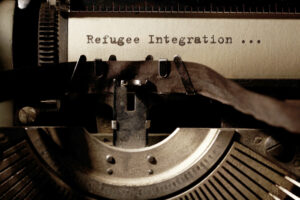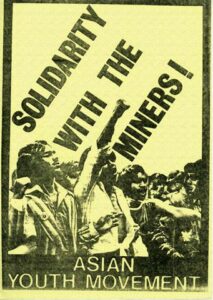WELCOME TO REFUGEE INTEGRATION

I’m Kerry Cressey, I live in Sheffield England and I work as a Community Development worker for the charity Sheffield Association for the Voluntary Teaching of English (SAVTE)
Our organisation assists refugees with learning English and integrating into their new community.
Earlier this year, I had the amazing opportunity to conduct research as a Churchill Fellow. During this period, I travelled for two weeks each to both San Francisco and Amsterdam. This trip was funded by the Churchill Fellowship and allowed me to gain valuable insights from other volunteer organisations supporting refugees in different countries.
During the process, I encountered some incredible organisations and soon realised that they could provide valuable lessons and best practices. It was a privilege to meet many of the volunteers in person, learn from them, hear their stories, and witness their remarkable work first-hand. This was genuinely a once-in-a-lifetime opportunity.
What is refugee integration?
According to the Home Office Indicators of Integration framework 2019, the UK Government’s Integrated Communities Strategy set out a vision for integration, defining it as ‘communities where people, whatever their background, live, work, learn and socialise together, based on shared rights, responsibilities and opportunities’.
Currently, the world is witnessing a vast number of people, over 26 million as noted by the United Nations, having to leave their homes and seek safety in other countries. This increasing number emphasises the need for welcoming and supportive environments where refugees can begin anew and become active, positive members of their new communities. It’s not always straightforward, as many hurdles exist, but with time and effort, refugees can rebuild their lives and play a crucial role in enhancing the culture and economy of their new communities.

Why is refugee integration important?
Refugee integration is profoundly significant in fostering a cohesive, harmonious society, enriched with diverse perspectives. It is a process that transcends merely providing shelter; it is about embracing individuals who have been uprooted from their homes and offering them a safe space to rebuild their lives with dignity and hope.
Through integration, we can nurture a community where every member, regardless of their background, can contribute meaningfully and thrive. It stands as a testament to our shared humanity, offering an opportunity to grow together, learn from each other’s experiences and cultures, and create a more understanding, compassionate, and inclusive world. It is not just a responsibility but a golden opportunity to enrich our societies with the vibrant tapestry of human stories and resilience that refugees bring.
Why the emphasis on the role of working class communities in refugee integration?

During the 1980’s UK miners strikes, the Asian community contributed to fundraising efforts for miners families.
Throughout UK history, first-generation migrants have predominantly been housed in poorer working-class communities. Whether that be Southwest Asians settling in the old mill towns of Lancashire, Yemenis coming to work in the steel factories of Sheffield or the Windrush generation settling mainly in Brixton, working-class communities have been and still are instrumental in shaping the landscape of successful migrant integration. The path is fraught with challenges, and I don’t pretend it’s always been a smooth one.
Yet, it’s a journey we’ve undertaken together, now evident in the rich tapestry of the UK’s multi-ethnic, multi-faith, multi lingual working-class communities. We grew up together, attended the same schools and were in and out of each other’s homes.
Working-class communities, even while grappling with their own sets of difficulties, step up to fill the gaps left by insufficient resources and policies. They epitomise the spirit of community, showing that often, the most profound connections are forged not through grand gestures but through simple acts of kindness and solidarity.
Winston Churchill once said, “We make a living by what we get, but we make a life by what we give.” This sentiment resonates deeply in the context of refugee integration. The rewards of this process benefit not just the refugees but also the host communities.
Through integration, societies become more inclusive, vibrant, and resilient, cultivating a culture of mutual respect and understanding. It fosters a community where individuals can look beyond their differences and collaborate towards a shared goal, creating a society richer in every sense.
Refugee integration – a paradigm shift
In the pages that follow, you’ll find a candid reflection on the realities of refugee integration, drawn from my research in Amsterdam, San Francisco, and Sheffield. I hope this enables readers to see refugee integration in a new light, potentially sparking a paradigm shift that, once recognised, cannot be ignored. This report highlights the considerable efforts and hard work that often go unnoticed, especially within the voluntary sector.
The account acknowledges not only the creativity and innovation found in various hubs of activity worldwide but also the determination and resilience that underpin these initiatives.
My hope is that this report serves as a testament to the tireless efforts and the genuine, albeit sometimes unsung, camaraderie that constitutes the core of this essential work carried out by so many for the betterment of many.
Creating a world of inclusive possibilities by welcoming and integrating refugees into our communities is a shared objective for all like-minded refugee support and outreach organisations. This involves transitioning from newcomers to neighbours and ensuring they feel welcomed and supported in their new home.

![]()
The views and opinions expressed in this report and its content are those of the author and not of the Churchill Fellowship or its partners, which have no responsibility or liability for any part of the report. All images are the author’s own unless otherwise stated.

